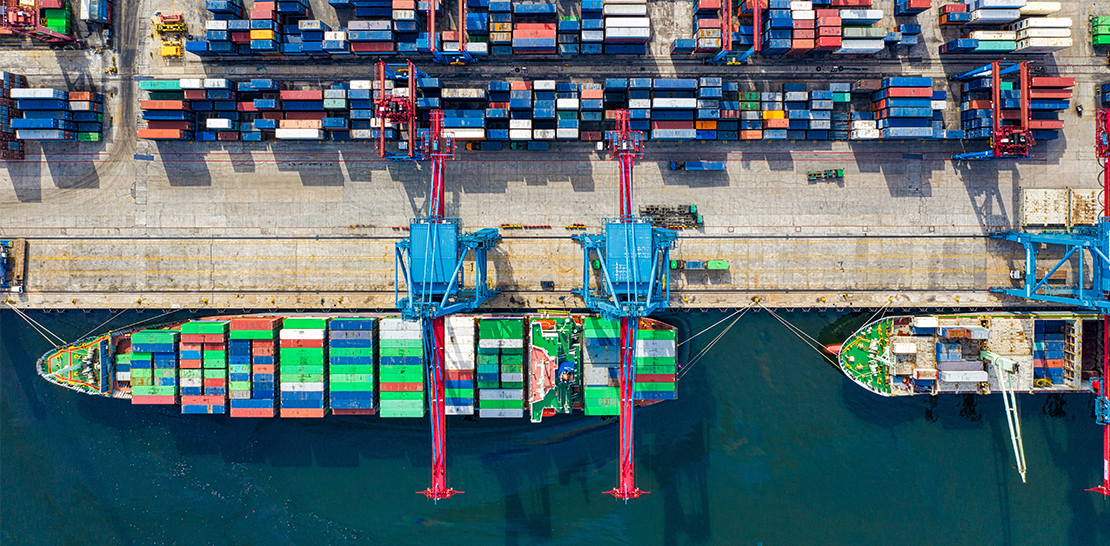DATA ANALYSIS, INDUSTRY 4.0, TRANSPORTATION
How Predictive Analysis is Transforming the Transportation Industry
.png)
Written by Virtualitics
Dec 1, 2021 9:31:51 AM

Getting people and goods from one point to another is fundamental in the world economy. Improving transportation has never been more important in today’s climate, and many are turning to predictive analysis. The desire to adopt this approach is sound in its possibilities, but it’s not an easy road. Multiple factors are making this an arduous task for organizations.
What’s Driving the Demand for Predictive Analysis in the Transportation Industry?
One of the most significant drivers is the demand for e-commerce deliveries. For example, FedEx has handled more than 12 million packages a day in 2021, which represents a significant increase over 2020. The increase in online orders has also led to an increase in subsequent returns.
With demand high, there are other considerations, such as a lack of drivers and operators. Supply chain woes continue, and transportation is often the weak link, especially in last-mile deliveries. Customers have elevated their expectations about deliveries and aren’t as forgiving as they used to be.
Logistics companies are striving for digital transformation by using data to make better decisions. That data, however, comes from disparate systems, making its analysis difficult.
With all these competing and intersecting challenges, employing predictive analytics in a strategic, accessible way is promising.
Let’s look at specific ways predictive analytics can help the transportation industry adapt to new market pressures and digitization.
How Predictive Analysis Supports Transportation
Here are 10 ways you can leverage predictive analysis in the industry.
1. Adjust shipment patterns
When you have data on the entire shipment process, you can use that data to improve the process. Although there are many parts to a shipment’s journey, it’s no longer a mystery where the challenges are, whether they’re at the beginning or the end.
You can use this data to adjust your shipping patterns when you discover the culprits of delays.
2. Provide on-time deliveries through the most efficient routes possible
Efficient route planning could be vital in increasing your on-time deliveries. The best way to achieve this is to apply Internet of Things (IoT) sensors to vehicles and shipping containers. These sensors ingest a lot of data that can lead to optimized routes.
3. Reduce the risks of cargo inventory errors and miscalculations
Reliable predictive analytics reporting can prevent calculation errors regarding inventory. With this capability, once data indicates there are cargo errors, you have the information necessary to intervene immediately.
4. Predict disruptions before they happen
Foresight is something every business would like to have. Predictive analysis makes that possible. Many disruptions can impact your shipping operations. Some of those disruptions are more predictable than others. Using sensors and historical data, you may be able to foresee things that could jeopardize logistics, including traffic issues, supply chain problems, and fleet management issues.
5. Create visibility into seasonal buying patterns and forecasts
Certain times of the year will have higher levels of demand, such as the holiday season. Transportation companies are aware that this uptick will happen, but they may not have clarity on the details.
Visibility requires looking inside the data, and a 3D visualization is one of the best ways to do that. Companies can look at historical data and manipulate their models with different variables, ensuring they create data-driven forecasts to plan for the increasing demand.
6. Practice proactive fleet maintenance
Taking care of your fleet is essential to keeping things moving. When breakdowns occur, you lose valuable time. By collecting data from your fleet and analyzing it via sensors, you can move to a proactive approach to maintenance, which reduces unplanned downtime.
It can also reduce overall maintenance costs each year. Identifying potential issues before they arise is key to achieving this.
7. Increase warehouse efficiencies
Being more efficient in the warehouse means you can be more efficient when you’re on the road, on the rail, in the air, or at sea. A well-run, organized, and data-driven warehouse uses IoT sensors to find inefficiencies.
8. Manage fuel efficiency
Those IoT sensors used for route efficiency and predictive maintenance can also help with fuel efficiency. First, maintained vehicles tend to get better gas mileage. Additionally, if routes have a better flow and idle time is decreased, they’ll use less fuel.
Fuel also fluctuates in pricing based on a variety of factors. Analyzing these factors could help you allocate fuel more efficiently.
9. Optimize and reduce costs
Whenever you use data to make better decisions on routes, maintenance, and forecasting, you’re going to reduce costs associated with every aspect of transportation.
Through a continued analysis, you’ll be able to identify cost drivers and possible actions you can take to reduce their impact.
10. Address last-mile delivery challenges
The last-mile delivery problem is growing, and it currently comprises about 53 percent of overall shipping costs. You can look forward by analyzing historical data around this part of the delivery process. You can find recurring patterns through data visualizations that help you predict what routes will be like in the future.
Using the data, you may be able to optimize everything from routing to timing based on traffic patterns, or where to plan your next warehouse to improve proximity.
